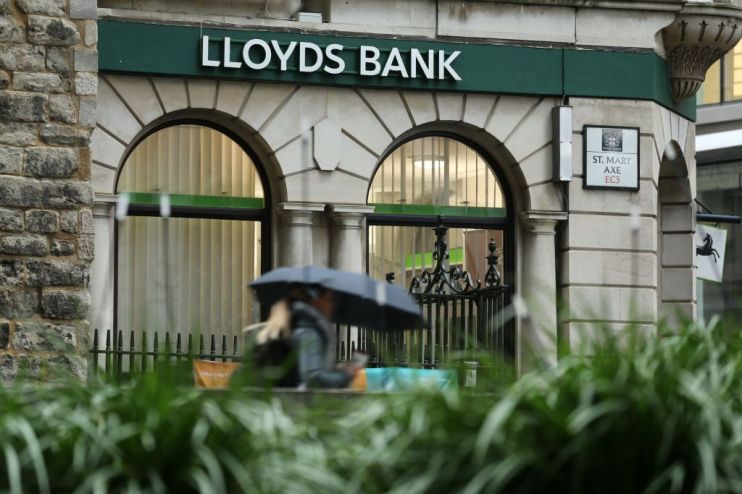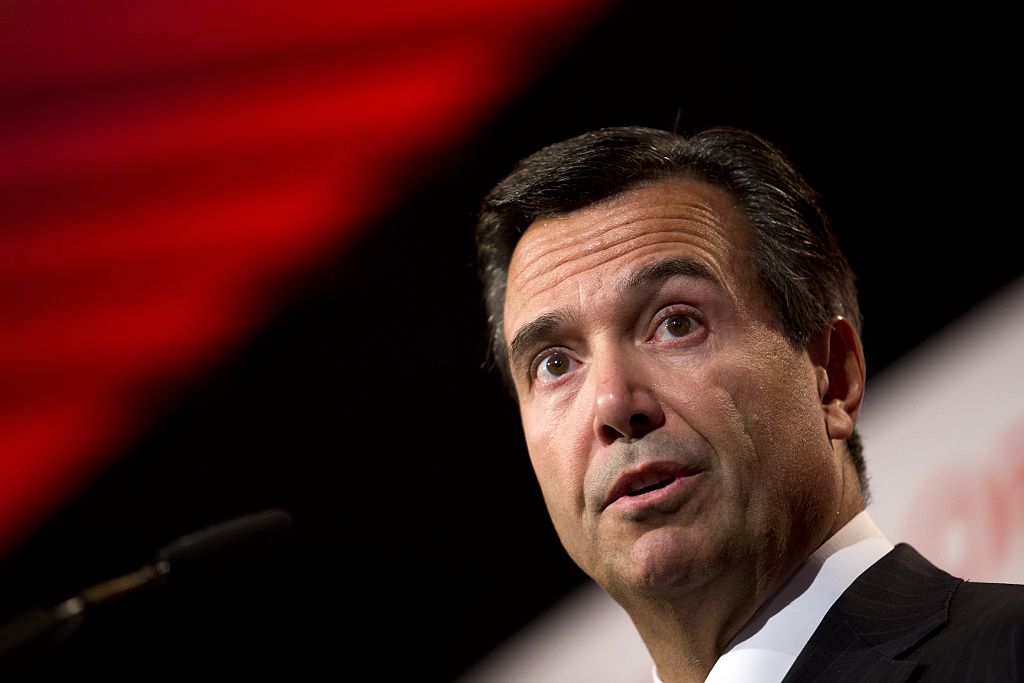PPI, profit drop, and a mixed 2020: Five takeaways from Lloyds’ results

Lloyds reported a 26 per cent drop in annual profit on Thursday, with Britain’s largest domestic lender hit by a rise in bad debts and billions of pounds of customer compensation payout.
Chief executive Antonio Horta-Osorio said the results demonstrated a “solid financial performance in a challenging external market”, but analysts have described them as “slightly disappointing”.
City A.M. delves into the results to break down the key aspects here.
Profit hit by compensation and spike in bad loans
The headline figure from today’s results is, of course, the substantial fall in profit. Pre-tax profit slumped 26 per cent to £4.39bn, 11 per cent below analysts’ expectations and down from £5.95bn in 2018.
Horta-Osorio said Lloyds’ performance had been impacted by a “substantial payment protection insurance (PPI) charge related to the deadline for claims submission”.
The banking giant was also hit by a spike in impairments on bad loads, which rose to £1.3bn, up from £937m the previous year, as weakening second-hand car prices hit Lloyds car financing division, and the failure of two large companies damaged its commercial arms.
PPI costs continue to drag
Lloyds has been the hardest hit lender in terms of compensation paid out following the PPI scandal. Overall, the saga is set to cost the financial sector over £50bn.
Despite the deadline for claims having been last August, payouts remained one of the biggest drags on full-year profit, with Lloyds hit by a one-off charge of £2.45bn
The bank said it had reached a final settlement with the Official Receiver, part of the Civil Service, over the mis-selling of the insurance. The financial details of the settlement were not disclosed, the sum is included within the total for the one-off charge.
Lloyds made no extra provisions for PPI compensation in the fourth quarter in 2019, news that is likely to come as a relief to investors.
Lloyds’ bonuses and dividends take a hit
Lloyds today announced a dividend of 3.37p per share. This amounts to a total payout of £2.4bn — well short of the £4bn total paid out the previous year.
In September, Lloyds suspended a planned £650m share buyback once the full costs of the PPI scandal became apparent.
Some investors had been hoping for an announcement on further buybacks today, but this failed to materialise.

The belt-tightening was not limited to investor returns, however, with staff also paying the price for Lloyds’ past misconduct. The lender slashed its bonus pool for 2019 by a third to £310m in the wake of the PPI scandal and its treatment of customers impacted by fraud at its HBOS Reading branch.
Horta-Osorio and chief operating officer Juan Colombas asked to be excluded from the 2019 bonus scheme in recognition of the poor performance and misconduct, but the pair were still paid £4.7m and £2.6m respectively.
“Given the suspension in the buyback, and the resulting reduction in returns for shareholders, Lloyds appears to have acknowledged the need to share the pain around,” said Russ Mould, AJ Bell’s investment director.
Some concerns about the balance sheet calmed — for now
Analyst concern about Lloyds’ balance sheet had been growing in the run up to its annual results, but today’s figures coupled with the bank’s reasonably optimistic guidance have helped allay some of those fears.
Lloyds said it would build capital at a rate of around 1.7 to two percentage points, a more positive forecast than expected.
While the hit from PPI knocked Lloyds’ return on tangible equity — a key measure of profitability (ROTE) — to 7.89 per cent compared to 11.7 per cent in 2018, the figure was 14.8 per cent on an underlying basis.
Lloyds said it expects a ROTE of between 12 and 13 per cent in 2020, compared to a previous target of between 14 and 15 per cent.
The bank reported a common equity tier 1 (CET1) ratio was 13.8 per cent last year, and said it would target an ongoing CET1 ratio of around 12.5 per cent.
“While fourth quarter earnings were soft, Lloyds is guiding for a resilient 2020 earnings and a slightly better than expected capital outlook,” said Barclays analysts.
Goodbody’s John Cronin said “the fact that the capital ratio target range has not been upped suggests management is doing its best to keep investors warm”.
Lloyds shares rose as much as 3.28 per cent following the results.
Lloyds’ 2020 outlook for UK economy
With its large exposure to British mortgages and businesses, Lloyds is often viewed as a bellwether for the wider UK economy.
While the rise in bad loans reported by the bank hinted at potential trouble ahead for the economy, Horta-Osorio remained upbeat despite the profit drop and said the economy remained “resilient”.
While there remains uncertainty over Britain’s trading relationships, he continued, the country now has a “clear sense of direction”.
“Household spending power is rising two per cent a year reflecting stronger pay growth and low unemployment,” he continued. “We now see public confidence showing evidence of a greater recovery as Brexit uncertainty has reduced.”
Profit margins across the retail banking sector have come under sustained pressure for several years due to record low interest rates. Lloyds warned this morning that its net interest margin — the difference between what it pays for funds earns from lending — would drop from 2.88 per cent in 2019 to between 2.75 and 2.8 per cent this year.
“Given its sensitivity to interest rates, management may be praying yesterday’s unexpectedly strong inflation number gives the Bank of England pause for thought over a potential rate cut,” said Mould.
“The conversation could soon turn to interest rate hikes which would be good for the banking sector’s earnings.”